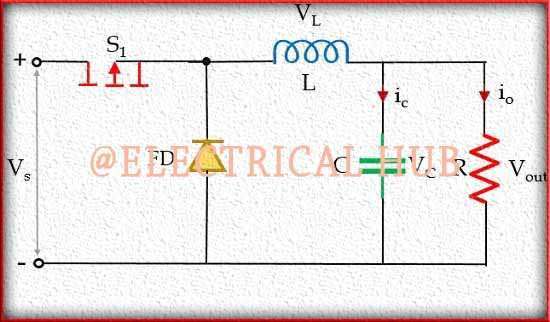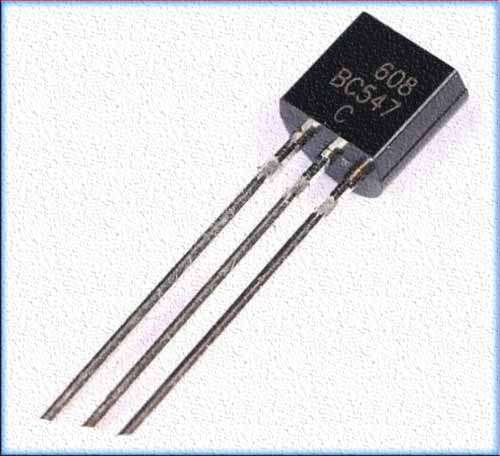Leakage Current in MOSFET: A Complete Guide
Leakage current in MOSFET is a critical parameter that engineers must understand for efficient circuit design. Whether you’re dealing with analog, digital, or power electronics, leakage current plays a significant role in determining the performance, reliability, and power efficiency of devices. As we continue to scale down transistor sizes, leakage becomes even more relevant.

In this article, we’ll explore what leakage current in MOSFET is, the different types of leakage currents, how they affect circuit behavior, and how to minimize them. We’ll also cover relevant technical insights and key formulas related to leakage current in transistor and other semiconductor devices.
What is Leakage Current in MOSFET?
Leakage current in MOSFET refers to the unwanted flow of current between terminals when the device is in the OFF state. Ideally, a MOSFET should completely cut off current in this state. However, due to various physical effects, a small amount of current still flows. This leakage can lead to power loss, overheating, and malfunction in precision circuits.
There are several sources of leakage current in a MOSFET, and each becomes prominent under specific operating conditions. These include subthreshold leakage, gate oxide leakage, and junction leakage.
Subthreshold Leakage Current in MOSFET
Subthreshold leakage is the current that flows between the drain and source even when the gate-to-source voltage is below the threshold voltage (Vth). This happens due to the weak inversion condition in the channel.
This type of leakage becomes significant in low-power designs, especially in battery-operated devices. It increases exponentially with temperature and is also affected by the threshold voltage. The lower the threshold voltage, the higher the subthreshold leakage.
Here’s a simplified expression:
Isub ≈ I₀ × exp[(VGS – Vth) / (n × VT)]
Where:
- I₀ = pre-exponential factor
- VGS = gate-to-source voltage
- Vth = threshold voltage
- n = subthreshold slope factor
- VT = thermal voltage
This formula is closely related to the Leakage Current Formula for Transistor, as it applies the same exponential behavior seen in traditional bipolar junctions.
Know more about applications of schmitt trigger
Gate Oxide Leakage in MOSFET
Gate oxide leakage occurs due to tunneling current through the thin silicon dioxide layer that separates the gate terminal from the channel. In modern MOSFETs, especially those built using nanometer technologies, this oxide layer is extremely thin—just a few nanometers thick.
This results in quantum tunneling of electrons. The thinner the oxide, the higher the leakage. High gate oxide leakage can lead to significant static power consumption, especially in deep submicron CMOS technologies.
The gate leakage is generally modeled as:
Igate ≈ A × exp(−B / tox)
Where:
- A and B are constants
- tox = oxide layer thickness
Gate oxide leakage is one of the main challenges in scaling down devices beyond 45nm.
Junction Leakage Current in MOSFET
Junction leakage occurs due to the reverse bias between the drain and the substrate junction or the source and substrate junction. This is a standard reverse-bias diode leakage seen in the p-n junction.
This leakage is also temperature-dependent and becomes significant at high temperatures or under radiation conditions. It is similar in behavior to Leakage Current in Diode, as it follows the reverse saturation current model.
Junction leakage increases with doping concentration and junction area. It is typically negligible in low-voltage applications but can become a major issue in high-power designs.
Summary Table of Leakage Currents in MOSFET
| Type of Leakage | Cause | Depends On | Impact Area |
|---|---|---|---|
| Subthreshold Leakage | Weak inversion in channel | VGS, Vth, Temperature | Power loss in low-power devices |
| Gate Oxide Leakage | Tunneling through gate oxide | Oxide thickness, gate voltage | Static power in scaled-down nodes |
| Junction Leakage | Reverse bias p-n junction | Temperature, doping, junction area | High-power and high-temperature |
Impact of Leakage Current in MOSFET on Circuit Design
Understanding leakage current in MOSFET is vital when designing systems that demand energy efficiency. In digital circuits, leakage can contribute to standby power consumption. For battery-operated systems, even small leakage currents can drain power over time.
In analog systems, leakage can offset voltage levels and introduce noise. It also affects the biasing conditions of sensitive circuits, leading to performance drifts.
In power electronics, such as inverters and converters, leakage may result in unwanted heat generation. This requires additional thermal management and increases system cost.
Techniques to Reduce Leakage Current in MOSFET
There are several methods used in design and fabrication to minimize leakage current in MOSFET:
- Use of high-k dielectrics: These reduce gate leakage by allowing thicker dielectric layers while maintaining capacitance.
- Multi-threshold CMOS (MTCMOS): Low-leakage devices are used for standby modes while faster, leakier devices are used during active modes.
- Body biasing techniques: By adjusting the body bias, threshold voltage can be controlled dynamically to reduce subthreshold leakage.
- Sleep transistors: These disconnect portions of a circuit when inactive, reducing leakage paths.
Each method has trade-offs, typically between performance, area, and power. The choice depends on the target application.
Leakage Current in MOSFET and Technology Scaling
As transistor geometries shrink below 10nm, leakage currents increase significantly. While shrinking allows more devices per chip, it also means thinner oxides, higher doping, and smaller junctions—all contributing to increased leakage.
This has led to innovations like FinFETs, SOI (Silicon-On-Insulator), and other advanced transistor structures. These new architectures reduce leakage by better control over the channel and reduced parasitic junctions.
Still, leakage current in transistor remains a fundamental limiting factor in further scaling. Designers must now balance between power, performance, and area more than ever before.
Leakage Current in MOSFET vs Other Devices
Compared to bipolar junction transistors (BJTs), MOSFETs generally have lower leakage. However, this advantage shrinks with reduced geometries and high-temperature environments.
In diodes, leakage occurs in reverse bias as minority carrier drift. This is particularly noticeable in leakage current in diode devices like Zener or Schottky diodes. Unlike MOSFETs, diode leakage is generally easier to predict but harder to control due to less flexible geometry.
Measurement and Testing of Leakage Current in MOSFET
Measuring leakage current in MOSFET requires sensitive instruments due to the extremely low current levels (often in nA or pA range). Instruments such as picoammeters or source-measure units (SMUs) are used.
Test conditions must be carefully controlled, particularly temperature and bias voltages. For precise measurements, the device should be shielded from noise and environmental disturbances.
Formula Reference: Leakage Current in MOSFET
Let’s bring together key formulas used in leakage current estimation:
| Leakage Type | Formula |
|---|---|
| Subthreshold | Isub ≈ I₀ × exp[(VGS – Vth) / (n × VT)] |
| Gate Oxide | Igate ≈ A × exp(−B / tox) |
| Junction Leakage | Ij ≈ Is × (exp[V / (η × VT)] − 1) |
These expressions are adaptations of the Leakage Current Formula for Transistor, used across various semiconductor components including MOSFETs.
Conclusion
Leakage current in MOSFET is an unavoidable reality of modern semiconductor devices. Its impact on power, performance, and reliability is too significant to ignore. As technology continues to shrink, engineers must adopt smarter design and fabrication techniques to minimize its effect.
From subthreshold conduction to gate tunneling and junction leakage, each type of leakage has unique causes and solutions. Accurate modeling, simulation, and measurement are essential to predicting and mitigating these effects.
By understanding the technical intricacies of leakage current in MOSFET, engineers can design more efficient, stable, and long-lasting electronic systems. This knowledge is also essential for making informed decisions about component selection, layout design, and system-level power management.
Follow Us on Social:
Subscribe our Newsletter on Electrical Insights to get the latest updates in Electrical Engineering.
#MOSFET, #LeakageCurrent, #ElectronicsEngineering, #SemiconductorDevices, #TransistorDesign, #PowerElectronics, #CircuitDesign, #MOSFETLeakage, #LowPowerDesign, #Nanoelectronics, #SubthresholdLeakage, #LeakageReduction, #TechExplained, #EngineeringConcepts, #VLSIDesign




